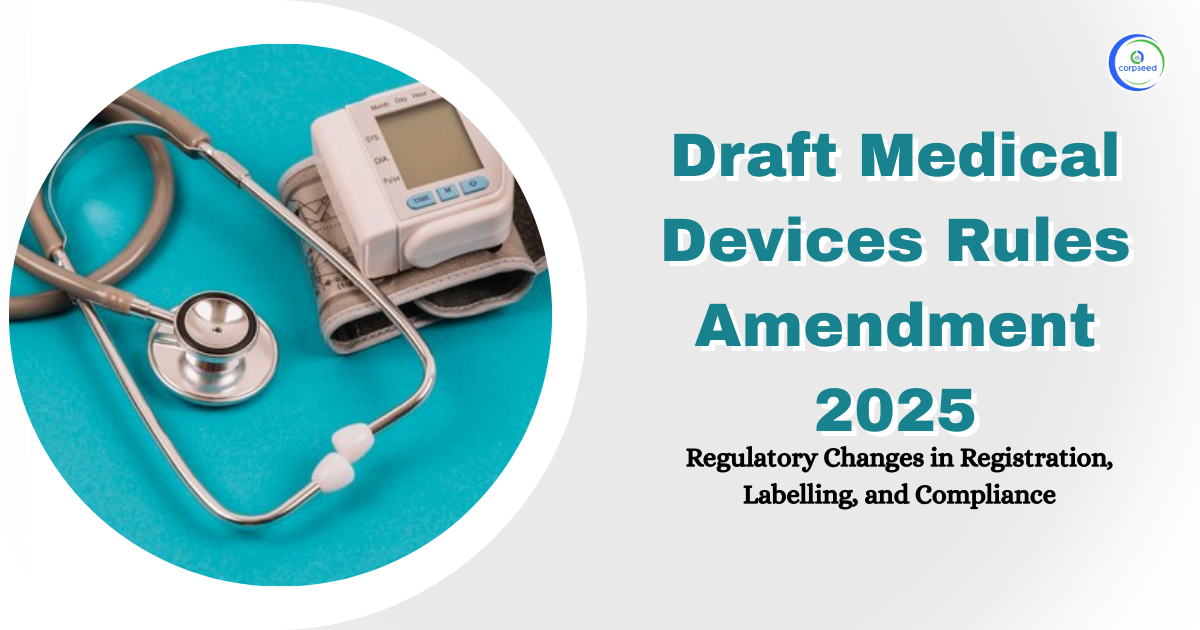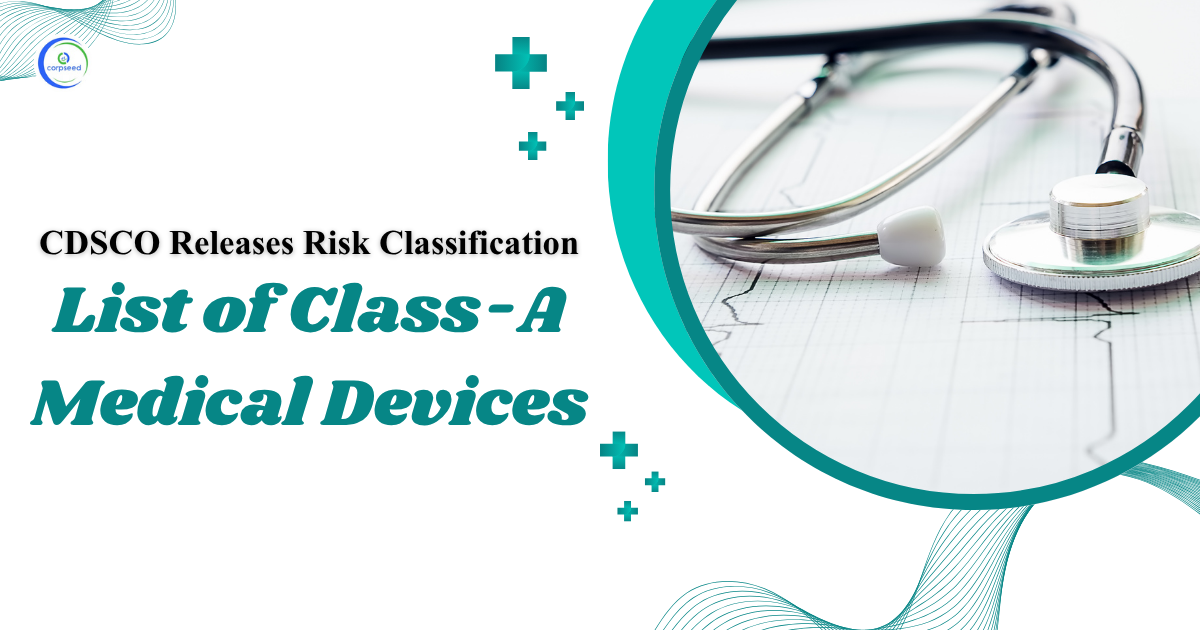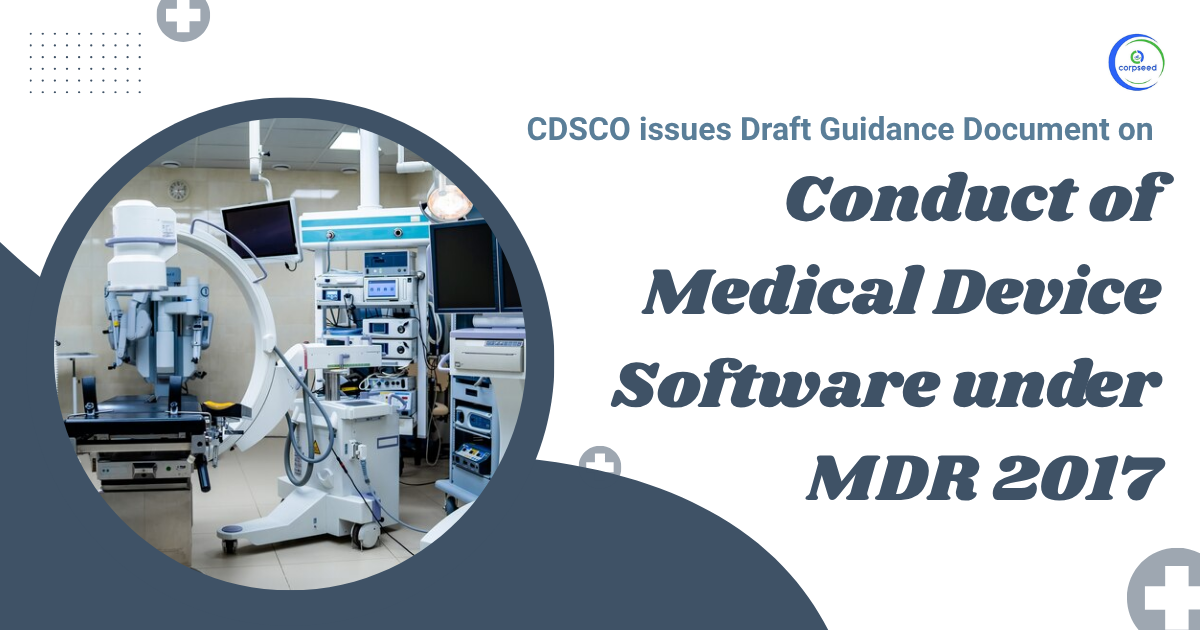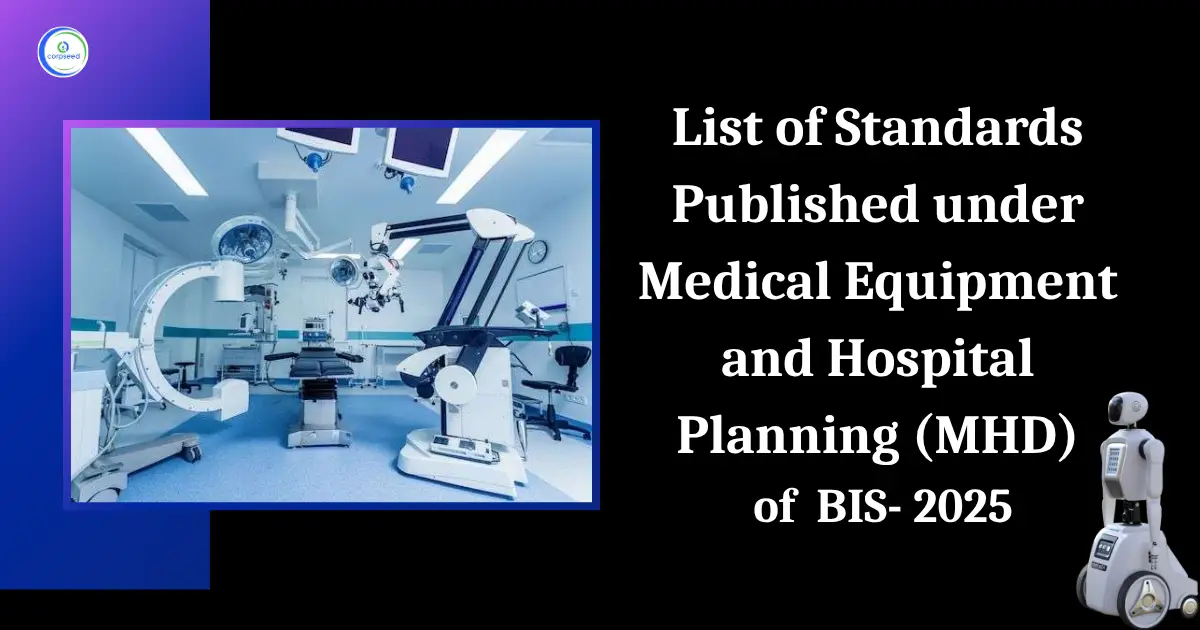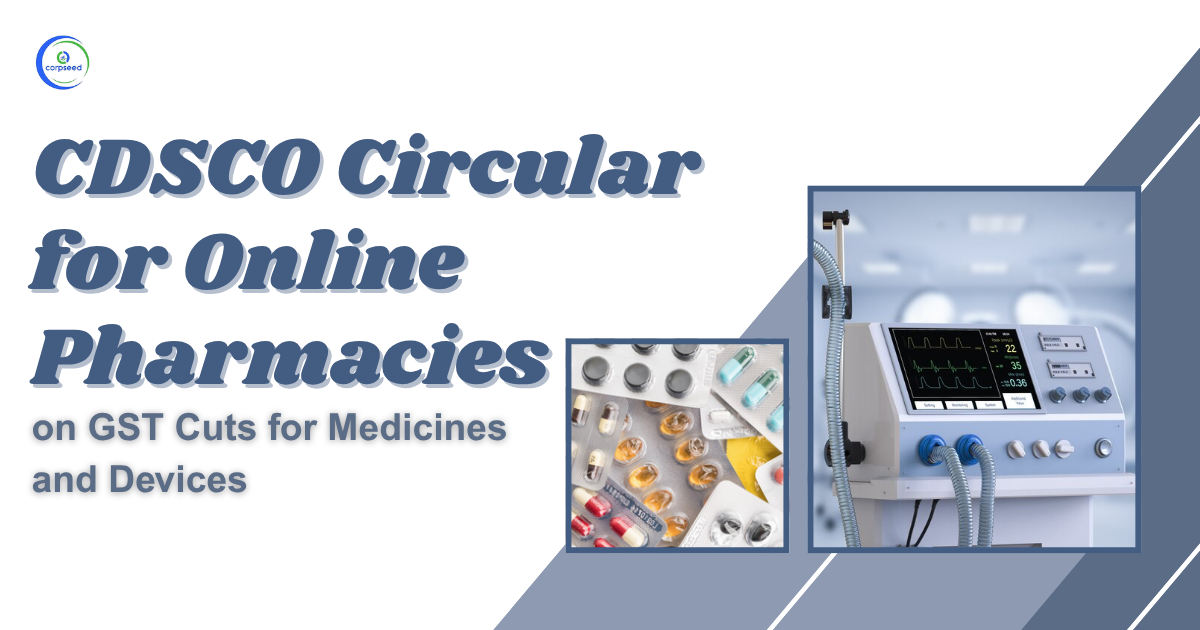A Brief Introduction of Interventional Radiology
Medical professionals Use interventional radiology technique to diagnose and treat the diseases. Medical professionals can treat so many medical conditions trough interventional radiology. In this medical technique, medical professionals insert some small tools into the body such as catheters or wire for different machines such as X-ray (Imaging techniques), CT scan, and Ultrasound machines. This interventional radiology can be an alternate option of surgery for different medical conditions. And it also reduce the hospitalization period for patients.
Table of Contents
- A Brief Introduction of Interventional Radiology
- What is a Medical Device?
- Types of Medical Devices in India
- Eligibility Criteria for Medical Devices Registration/Import
- Process & Fee for Medical Devices Registration
- Documents required to be attached
- Time Involved &Validity for Registration
- Re-registration or Renewal of the Registration Certificate
- Post-Compliances after Receiving Registration
- How to Register any new/additional Medical Device if Medical Device Registration Obtained Already?
--------------Blog Contact Form-------------
From 1st of October 2022, the said medical devices having risk class A and B will be covered under the licensing regime of CDSCO. Once the devices are under the scope of licensing regime of CDSCO, all the importers and manufacturers of the said devices will have to apply for the license in order to sell their products in Indian Market.
The INTERVENTIONAL RADIOLOGY category consist of total 43 medical devices which are classified on the basis of their risk class and intended use. Out of which only class A and class B medical devices will fall under the licensing regime from 1 October 2022. The CDSCO listed medical devices are as below mentioned
| INTERVENTIONAL RADIOLOGY | |||
| S. No. | Device Name | Intended Use | Classification on India as per first schedule part 1 |
| 1 | Scintillation (gamma) camera | A scintillation (gamma) camera is a device intended to image the distribution of radionuclides in the body by means of a photon radiation detector. | A |
| 2 | Positron camera | A positron camera is a device intended to image the distribution of positron-emitting radionuclides in the body. | A |
| 3 | Nuclear whole body counter | A nuclear whole body counter is a device intended to measure the number of radionuclides in the entire body. | A |
| 4 | Bone sonometer | A bone sonometer is a device that transmits ultrasound energy into the human body to measure acoustic properties of bone that indicate overall bone health and fracture risk. | B |
| 5 | Nuclear rectilinear scanner | A nuclear rectilinear scanner is a device intended to image the distribution of radionuclides in the body by means of a detector (or detectors) whose position moves in two directions with respect to the patient. | A |
| 6 | Nuclear uptake probe | A nuclear uptake probe is a device intended to measure the amount of radionuclide taken up by a particular organ or body region. | A |
| 7 | Nuclear whole body scanner | A nuclear whole body scanner is a device intended to measure and image the distribution of radionuclides in the body by means of a wide-aperture detector whose position moves in one direction with respect to the patient. | A |
| 8 | Nuclear scanning bed | A nuclear scanning bed is an adjustable bed intended to support a patient during a nuclear medicine procedure. | A |
| 9 | Radionuclide dose calibrator | A radionuclide dose calibrator is a radiation detection device intended to assay radionuclides before their administration to patients | B |
| 10 | Nuclear anthropomorphic phantom | A nuclear anthropomorphic phantom is a human tissue facsimile that contains a radioactive source or a cavity in which a radioactive sample can be inserted. It is intended to calibrate nuclear uptake probes or other medical instruments. | A |
| 11 | Nuclear flood source phantom. | A nuclear flood source phantom is a device that consists of a radiolucent container filled with a uniformly distributed solution of the desired radionuclide. It is intended to calibrate a medical gamma camera-collimator system for uniformity of response | A |
| 12 | Nuclear sealed calibration source | A nuclear-sealed calibration source is a device that consists of an encapsulated reference radionuclide intended for the calibration of medical nuclear radiation detectors. | A |
| 13 | Nuclear electrocardiograph synchronizer | A nuclear electrocardiograph synchronizer is a device intended for use in nuclear radiology to relate the time of image formation to the cardiac cycle during the production of dynamic cardiac images | A |
| 14 | Radionuclide test pattern phantom | A radionuclide test pattern phantom is a device that consists of an arrangement of radiopaque or radioactive material sealed in a solid pattern intended to serve as a test for a performance characteristic of a nuclear medicine imaging device. | A |
| 15 | Nonfetal ultrasonic monitor | A nonfetal ultrasonic monitor is a device that projects a continuous high-frequency sound wave into body tissue other than a fetus to determine frequency changes (doppler shift) in the reflected wave and is intended for use in the investigation of nonfetal blood flow and other nonfetal body tissues in motion. | B |
| 16 | Ultrasonic pulsed doppler imaging system | An ultrasonic pulsed doppler imaging system is a device that combines the features of continuous wave doppler-effect technology with pulsed-echo effect technology and is intended to determine stationary body tissue characteristics, such as depth or location of tissue interfaces or dynamic tissue characteristics such as velocity of blood or tissue motion. | B |
| 17 | Ultrasonic pulsed echo imaging system | An ultrasonic pulsed echo imaging system is a device intended to project a pulsed sound beam into body tissue to determine the depth or location of the tissue interfaces and to measure the duration of an acoustic pulse from the transmitter to the tissue interface and back to the receiver. | B |
| 18 | Diagnostic ultrasonic transducer | A diagnostic ultrasonic transducer is a device made of a piezoelectric material that converts electrical signals into acoustic signals and acoustic signals into electrical signals and intended for use in diagnostic ultrasonic medical devices. | B |
| 19 | Radiographic film marking system | A radiographic film marking system is a device intended for medical purposes to add identification and other information onto radiographic film by means of exposure to visible light. | A |
| 20 | Diagnostic x-ray high voltage generator | A diagnostic x-ray high voltage generator is a device that is intended to supply and control the electrical energy applied to a diagnostic x-ray tube for medical purposes. | B |
| 21 | Diagnostic x-ray tube housing assembly. | A diagnostic x-ray tube housing assembly is an x-ray generating tube encased in a radiation-shielded housing that is intended for diagnostic purposes. | A |
| 22 | Diagnostic x-ray tube mount | A diagnostic x-ray tube mount is a device intended to support and to position the diagnostic x-ray tube housing assembly for a medical radiographic procedure. | A |
| 23 | Pneumoencephalo graphic chair | A pneumoencephalographic chair is a chair intended to support and position a patient during pneumoencephalography (x-ray imaging of the brain). | B |
| 24 | Radiologic patient cradle | A radiologic patient cradle is a support device intended to be used for rotational positioning about the longitudinal axis of a patient during radiologic procedures. | A |
| 25 | Radiographic film | Radiographic film is a device that consists of a thin sheet of radiotransparent material coated on one or both sides with a photographic emulsion intended to record images during diagnostic radiologic procedures. | A |
| 26 | Radiographic film cassette | A radiographic film cassette is a device intended for use during diagnostic x-ray procedures to hold a radiographic film in close contact with an x-ray intensifying screen and to provide a light-proof enclosure for direct exposure of radiographic film | B |
| 27 | Radiographic film/cassette changer | A radiographic film/cassette changer is a device intended to be used during a radiologic procedure to move a radiographic film or cassette between x-ray exposures and to position it during the exposure. | B |
| 28 | Wall-mounted radiographic cassette holder | A wall-mounted radiographic cassette holder is a device that is support intended to hold and position radiographic cassettes for radiographic exposure for medical use. | A |
| 29 | Radiographic film illuminator | A radiographic film illuminator is a device containing a visible light source covered with a translucent front that is intended to be used to view medical radiographs | A |
| 30 | Radiographic grid | A radiographic grid is a device that consists of alternating radiolucent and radiopaque strips intended to be placed between the patient and the image receptor to reduce the amount of scattered radiation reaching the image receptor. | A |
| 31 | Radiographic head holder | A radiographic head holder is a device intended to position the patient's head during a radiographic procedure. | A |
| 32 | Radiologic quality assurance instrument | A radiologic quality assurance instrument is a device intended for medical purposes to measure a physical characteristic associated with another radiologic device. | A |
| 33 | Radiographic anthropomorphic phantom | A radiographic anthropomorphic phantom is a device intended for medical purposes to simulate a human body for positioning radiographic equipment. | A |
| 34 | Radiographic intensifying screen | A radiographic intensifying screen is a device that is a thin radiolucent sheet coated with a luminescent material that transforms incident x-ray photons into visible light and intended for medical purposes to expose radiographic film. | A |
| 35 | Radiographic ECG/respirator synchronizer | A radiographic ECG/respirator synchronizer is a device intended to be used to coordinate an x-ray film exposure with the signal from an electrocardiograph (ECG) or respirator at a predetermined phase of the cardiac or respiratory cycle. | A |
| 36 | Medical image storage device | A medical image storage device is a device that provides electronic storage and retrieval functions for medical images. Examples include devices employing magnetic and optical discs, magnetic tape, and digital memory. | A |
| 37 | Flexible ultrasound colonoscope | An endoscope with a flexible inserted portion intended for the visual examination and treatment of the entire colon [lower gastrointestinal (GI) tract]. It is inserted through the anus during colonoscopy. | B |
| 38 | Flexible ultrasound duodenoscope | An endoscope with a flexible inserted portion, combined with an ultrasound probe, intended for the visual examination and treatment of the duodenum (the first part of the small intestine). It is inserted into the body through the mouth during duodenoscopy. | B |
| 39 | Flexible ultrasound gastroduodenosco pe | An endoscope with a flexible inserted portion, combined with an ultrasound probe, intended for the visual examination and treatment of the upper gastrointestinal (GI) tract [oesophagus, stomach, and duodenum (the first part of the small intestine), including the pancreas and the bile duct]. It is inserted into the body through the mouth during gastroduodenoscopy. | B |
| 40 | Flexible ultrasound laparoscope | An endoscope with a flexible inserted portion, combined with an ultrasound probe, intended for the visual examination, treatment, and ultrasonic imaging of the abdominal/retroperitoneal cavity and its organs. It is inserted through an incision made in the abdominal wall (routinely just below the umbilicus) during laparoscopy. | B |
| 41 | Flexible ultrasound bronchoscope | An endoscope with a flexible inserted portion intended for the visual examination and treatment of the trachea, bronchi, and lungs. It is inserted through the mouth or nose during bronchoscopy. | B |
| 42 | Bladder ultrasound imaging transducer | An ultrasound imaging transducer assembly specifically designed to be positioned within the bladder either manually or under endoscopic guidance steers, focuses, and detects the ultrasound beam and resulting echoes either mechanically or electronically. | B |
| 43 | General-purpose ultrasound imaging system | A stationary or mobile (e.g., on wheels) assembly of devices designed to collect, display, and analyse ultrasound images during a variety of extracorporeal and/or intracorporeal (endosonography or endoscopic) ultrasound imaging procedures (e.g., cardiac, OB/GYN, endoscopy, breast, prostate, vascular, and intra-surgical imaging). | B |
Central Drugs Standard Control Organisation:
India is growing as one of the nation's leading in pharmaceutical business and is among the top ten nations in terms of the pharmaceutical industry. Several factors such as large population, growing health awareness, affordable medical facilities, and better research facilities have given rise to the manufacturing and development of pharma business in India. However, with the increasing scope for the growth of the pharma industry in India, there are possibilities for the sale/purchase of medical equipment & device illegally or without jurisdiction. Therefore, the Government of India has established the Central Drug Standards Control Organization (CDSCO), which is the primary legislative body and has been responsible for the regulation, control, and management of pharmaceuticals and medical devices in India apart from the appointment of the Drug Controller General of India (DCGI), and has conferred the responsibility of undertaking assessment, approval and regulation of further compliances(import, export, sale, distribution) in the matters of medicinal drugs and medical devices(including any existing or any new) drugs/devices in accordance with the provisions of the Drugs and Cosmetics Act 1940.

What is a Medical Device?
According to the latest definition as provided under the Medical Devices Amendment rules 2020, as notified on 11.02.2020. However, taking care of circumstances the government has exercised its powers to include more categories by widening the scope of the definition of “Medical Device” under the Act. It states-
"Devices used in general medical practice such as medical apparatus, instruments, implants appliance, etc., which are either used individually or in combination, and are intended to be specifically applied for human beings or animals and are further intended to obtain the desired function by such means and for such purposes as provided below, but is not intended to meet the primary intended action on human body or animals by any pharmacological or immunological or metabolic means-
- Analysis, prevention, observing, treatment, or mitigation of any disease or disorder;
- Analysis, observing, treatment, mitigation, or support for any injury or disability;
- Examination, replacement or alteration or support in findings of the anatomy or a physiological process;
- For supporting or sustaining life;
- Decontamination of medical devices; and
- Conception related equipment’s & devices.
Therefore, every manufacturer or importer or both of any medical devices in India shall be required to obtain registration as per the provisions of the Drugs and Cosmetics Act 1940. Any failure to comply with the same may invite legal action including penalty & prosecution under the Act.
Types of Medical Devices in India
Provisions related to the import, manufacture, sale & distribution of medical devices are regulated under the provisions of the drug and cosmetics Act 1945. Under the New Medical Rules 2017, all medical devices have been classified into four different categories depending on their usability & risk involved as provided below.
- Class A:- Low-risk devices like a thermometer, tongue depressors, etc.
- Class B:- Low moderate risk like Hypodermic Needles, suction equipment, etc.
- Class C:- Moderate high-risk devices like Lung ventilator, etc.
- Class D:- High-risk devices like Heart valves, implantable devices, etc.
Where Class A & B devices are considered to be less risky and moderate devices, for which the application to manufacture has to be filed to the State Licensing Authority. Whereas Class C &D are considered to be high and very High-risk devices and the application for these has to be filed to the Central Licensing Authority of India.
Eligibility Criteria for Medical Devices Registration/Import
The provisions related to activities such as Import, manufacture, sale, and distribution of medical devices have been regulated under the provisions of the Drugs & Cosmetic Act 1940 & Rules 1945. Therefore, any person/firm/enterprise, etc. holding a wholesale drug license and/or manufacturing license issued under the Drugs and Cosmetics Act, 1940 and Rules 1945 could make an application for Registration and import of medical devices into India.
Process & Fee for Medical Devices Registration
Types of Medical Devices Registration
- Registration/Import of any existing medical device;
- Registration /import of any new medical device
Step 1: Determine whether your medical device is under notified list or not
The CDSCO authority has provided a list of notified medical devices that need to compulsorily obtain registration under the Drugs and Cosmetics Act 1940 and in accordance with Medical devices rules 2017. However, there may be any medical devices that have not been expressly notified by the CDSCO authority, or in case of new medical equipment, the manufacturer/importer shall be required to obtain a NOC in such cases. For instance, Blood Grouping Sera Ligatures, Sutures, Staples Intra-Uterine Devices (Cu-T), Condoms, Tubal Rings, Surgical Dressing, Umbilical Tapes, Blood / Blood Component Bags do not need registration, whereas devices such as spinal needles, cochlear implants, syringes, and needles, heart valves, endotracheal tubes and catheters among others should undergo registration provides with the CDSCO.
Step 2: Appoint an Authorized representative (in case of Foreign Entity)
For a foreign business manufacturer entity, it shall be necessary to appoint an authorized business entity in India, who shall be the contact person for the inspection authorities during the process, assist in device approvals, and registrations process, and vigilance adverse event reporting. The Indian Authorization should hold a wholesale drug license in forms 20B& 21B.
Step 3: Fill out the applicable form for Medical device Registration
In the next step, the manufacturer/importer for MD shall be required to submit the registration form of a regulatory dossier, along with all the prescribed documents along with the prescribed fee on the CDSCO portal to the DGCI (Drugs Controller General of India) by logging on to the online CDSCO portal https://cdsco.gov.in/opencms/opencms/en/Home/ and signing into the portal.
Following forms along with applicable govt. fees have been provided below, which shall be required to be paid through payment challan-
| Applicant Type | Class of MD | Application Form | License Form |
| Importer | A,B,C,D | MD-14 | MD-15 |
| Manufacturer | A B | MD-3 | MD-5 |
| Manufacturer(Loan License) | A B | MD-4 | MD-6 |
| Manufacturer | C, D | MD-7 | MD-9 |
| Manufacturer(Loan License) | C, D | MD-8 | MD-10 |
However, in the case of new equipment or medical device-
| Application Type | Class of MD | Application Form | License Form |
| Importer Clinical Investigation | A,B,C,D | MD-22 | MD-23 |
| Import License | A,B,C,D | MD-26 | MD-27 |
| Test License(for importer) | A,B,C,D | MD-16 | MD-17 |
| Manufacturer (Clinical investigation) | A,B,C,D | MD-22 | MD-23 |
| Manufacturer License | A,B,C,D | MD-26 | MD-27 |
| Test License | A,B,C,D | MD-16 | MD-17 |
Further, each application shall be supported with the list of documents and the requisite fee as provided in the online portal of CDSCO-
| Type of License | Class of Device | Applicable Regulation | Govt. Fee |
| For Manufacturing/Loan License For one site For each device |
A or B; | 20(2) | Rs. 5000 Rs. 500 |
| For Manufacturing/Loan License For one site For each device |
C or D; | 21(2) | Rs. 50,000 Rs. 500 |
| For Import License(other than IVD) For one site For each device |
Class A | 34(2) | 1000 Dollar 50 Dollar |
| Import License(other than IVD) For one site For each device |
Class B | 34(2) | 2000 Dollar 1000 Dollar |
| Import License (in IVD) For one site For each device |
Class A or B | 34(2) | Rs. 1000 Rs. 10 |
| Import License (other than IVD) For one site For each device |
Class C or D | 34(2) | 3000 Dollar 1500 Dollar |
| Import License(in IVD) For one site For each device |
C or D | 34(2) | 3000 Dollar 500 Dollar |
Step 4: Obtain Certificate of Registration in Prescribed form
Once the application is submitted on the CDSCO portal, the DGCI registration authority may send a query through an inquiry letter to the manufacturer or from the authorized representative of the importer, along with the timeline within which the query should be answered and sometimes, may also ask for a technical presentation On satisfaction the authority may issue a license in such form as provided in the above list. After obtaining registration, the manufacturer or his authorized representative may apply for an importer license.
Documents required to be attached
- Form 40
- ISO 13485 certificate
- Full Quality Assurance Certificate
- CE Design Certificate
- Undertaking that all information provided is authentic
- Either a Free Sale Certificate or Certificate from the Foreign Government
- Certificate of Marketability from GHTF (Australia, Canada, Japan, the European Union, and the United States);
- Plant Master Report
- Device Master File
Time Involved &Validity for Registration
If the DGCI doesn’t ask for a Technical Presentation or Subject Expert Committee (SEC) audit, it takes around 6-9 months to obtain a Medical Devices Registration. In cases where Technical Presentation or Subject Expert Committee (SEC) audit, is required, it may take additional 3-6 months.
Once obtained the Registration Certificate shall be valid for a total period of 3 years from the date of issue of registration unless suspended or cancelled by the DGCI authority for proper causes.
Re-registration or Renewal of the Registration Certificate
The application for renewal of the MD registration certificate shall be made at least nine months from the expiry of the registration certificate. Though there are no additional requirements for the renewal of registration, it shall be necessary for the certificate holder to provide a copy of the Plant Master File (PMF) and Device Master File (DMF), where there are no changes in the PMF and DMF,
Post-Compliances after Receiving Registration
Though there are not many compliances in place about the registration certificate, it shall be compulsory for the certificate holder to-
- In case of any change that has taken place about the constitution of the firm and/or address of the registered office/factory premises, the MD manufacturer/authorized representative of the importer to intimate the licensing authority regarding the same in writing;
- In case any such change has taken place, the existing registration certificate shall be valid for a maximum period of three months from the date on which the change has taken place, and during this time, the manufacturer/authorized representative shall be required to obtain a fresh Registration Certificate;
How to Register any new/additional Medical Device if Medical Device Registration Obtained Already?
In case an importer wants to obtain registration for manufacturing of any additional manufacturing device, then such person shall be required to obtain an endorsement to the existing Registration Certificate along with the prescribed documents holding that manufacturing of an additional device is being undertaken in the manufacturing site as provided in the registration certificate along with a fee of 1000 dollars fee for each additional device.
Drug License
A drug license is an official permission granted to individuals or companies that manufacture, distribute, and sell drugs in India. It ensures adherence to the safety and quality standards of the regulatory authorities that ensure public health.
Medical Devices Import/Manufacturing
CDSCO online registration is a process that ensures that all the drugs, medical devices, and cosmetics in the market are safe, reliable, and must have passed quality standards. Importers, manufacturers, and others must register under the CDSCO for a certificate if they are working in this field.
Medical Devices Import
The CDSCO is responsible for medical device registration in India. This registration guarantees that all devices are safe, of high quality, and comply with regulatory standards. This registration not only protects patients but also supports global trade.
This portion of the site is for informational purposes only. The content is not legal advice. The statements and opinions are the expression of author, not corpseed, and have not been evaluated by corpseed for accuracy, completeness, or changes in the law.
BOOK A FREE CONSULTATION
Get help from an experienced legal adviser. Schedule your consultation at a time that works for you and it's absolutely FREE.




